MOUNT VERNON FAST FACTS
LOCATION: Mount Vernon, Fairfax County, Virginia
HOURS: 9am-4pm, November-March – 9am-5pm, April-October
COST: $28 Adults, $15 Children 6-11, & Children 5 & under are FREE.
TIME TO COMPLETE: 3-4 hours
ACCOMODATIONS: Large parking lot, public restrooms and gift shop
There are many things to see at Mount Vernon. The only place George Washington ever called home is located on the banks of the Potomac River just under 16 miles (25 km) southwest of Washington, D.C. in Alexandria, VA. The grounds, 8,000 acres (3,200 ha) when Washington was alive, is now just 500 acres (200 ha) in size but very well maintained. The mansion, or Main House, is 11,028 sq ft (1,025 m2) and constructed in the classic Palladian style. Unfortunately, no records exist of precisely who the original architect was.

The Washington family purchased the land in 1674 but its name wasn’t established until 60 years later when Washington’s half-brother paid tribute to the English naval officer, Vice Admiral Edward Vernon. The Main House was originally built in 1734 and saw continuous upgrades until Washington’s death in 1799. Almost a victim of demolition, the plantation was saved from destruction in 1858 by the Mount Vernon Ladie’s Association and became a National Historic Landmark in 1960. The grounds are wonderfully laid out and signs at ground level do an excellent job, along with a map of the grounds, of making sure you don’t miss any of the things to see at Mount Vernon.
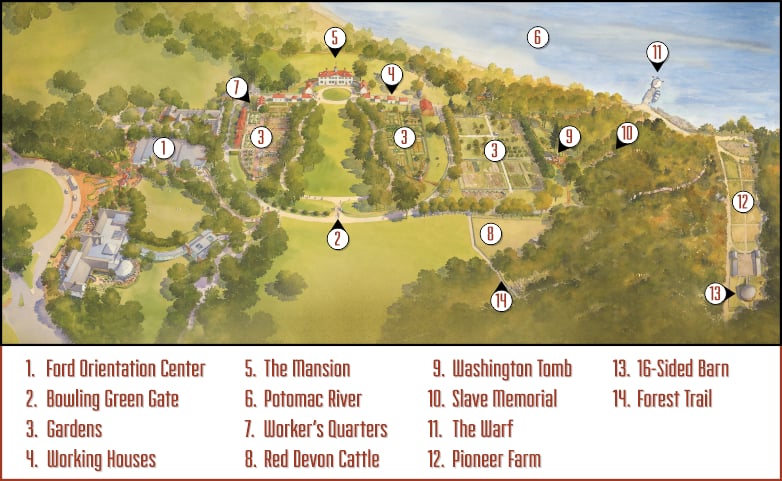
Ford Orientation Center
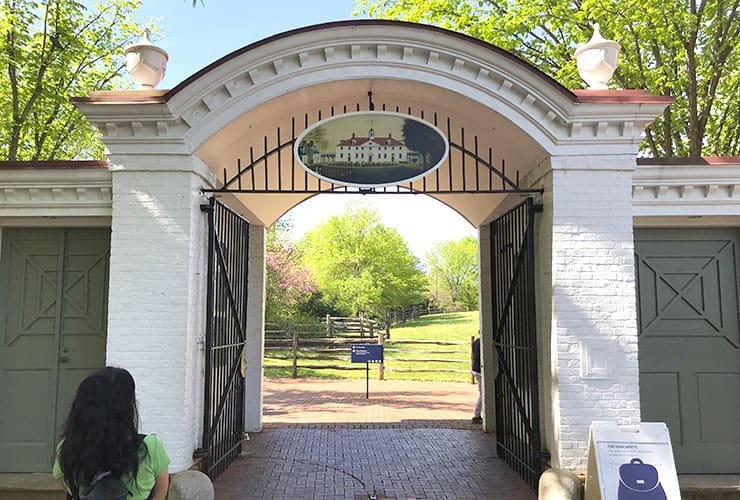
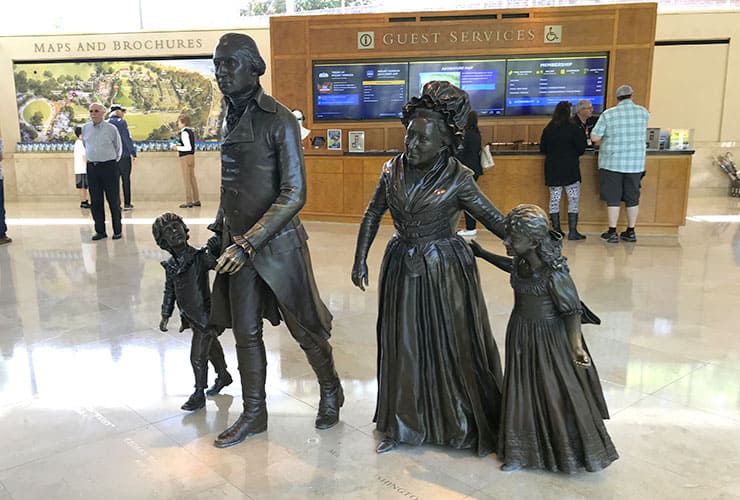
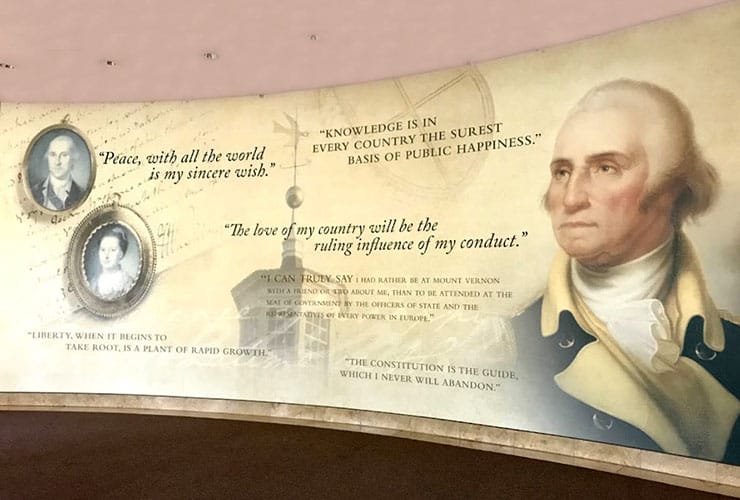
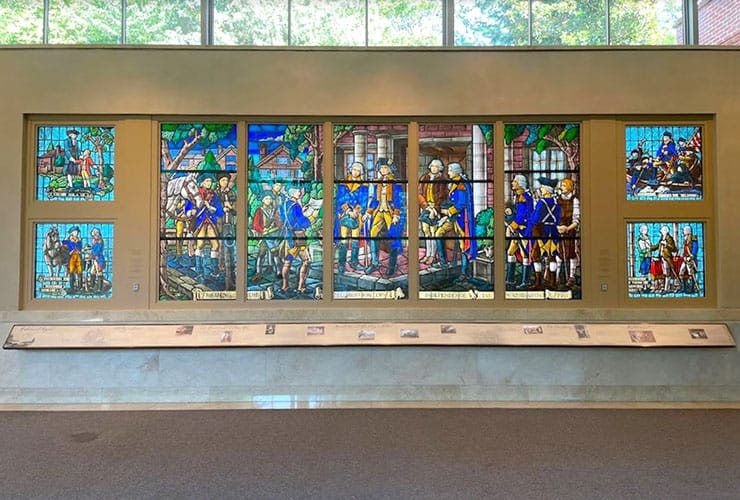
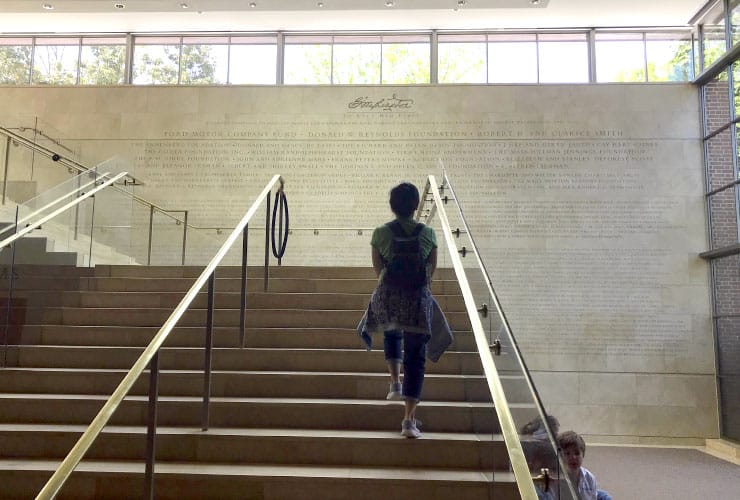
Though technically your journey begins at the front gate, which leads to the ticket booth, your true exploration of Mount Vernon begins at the Ford Orientation Center. This wonderful introduction point not only serves as a guide for things to see at Mount Vernon but also works as a museum, an entertainment center and a resource about George and Martha Washington. There are two theaters, a gift shop and a fantastic full-size bronze statue of the Washington’s walking with their two small children. You’ll exit out the southwest doors along the path towards the main house.
Bowling Green Gate
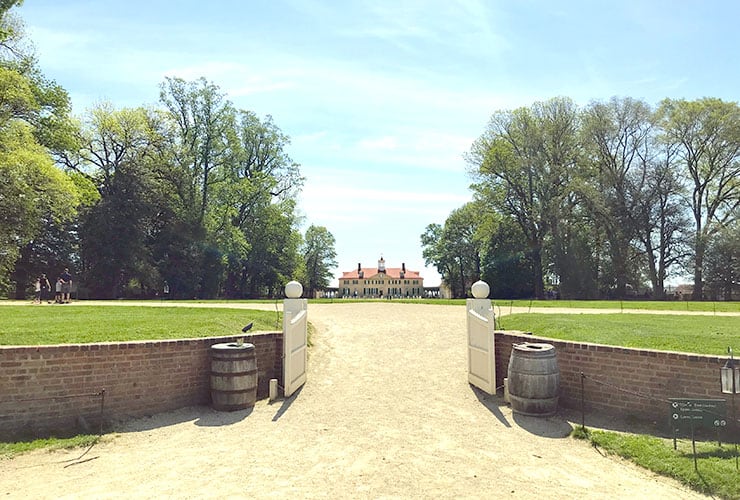
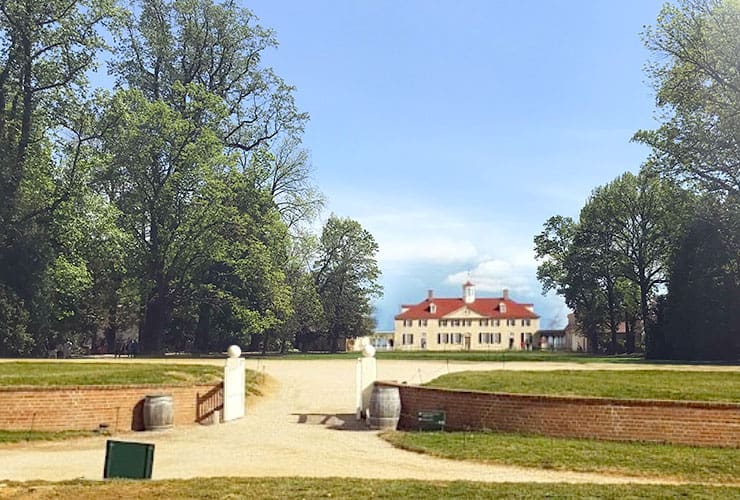
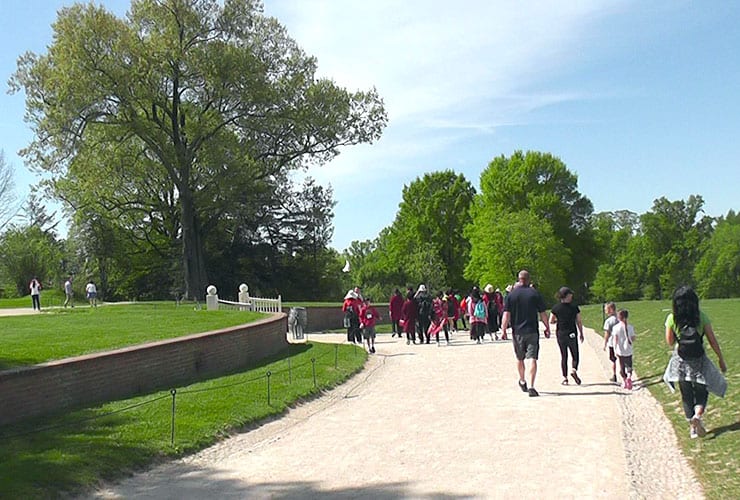
There are three gates that lead to the main house but the most prominent is the Bowling Green Gate. The gate, as with the main house, has taken on many different looks over the centuries. Where once a white picket fence atop a curved brick wall framed the west end of the Bowling Green, today only the brick wall (since refurbished) remains with a simple post gate at its center. The view from the gate is simple yet powerful as the large green is encircled by two serpentine walks framed by a heavy grove of trees some dated as far back as 1785. To the west of the gate sits the 12-Acre (4.9 ha) Field which served as the entry point for visitors arriving by horseback or carriage.
The Gardens
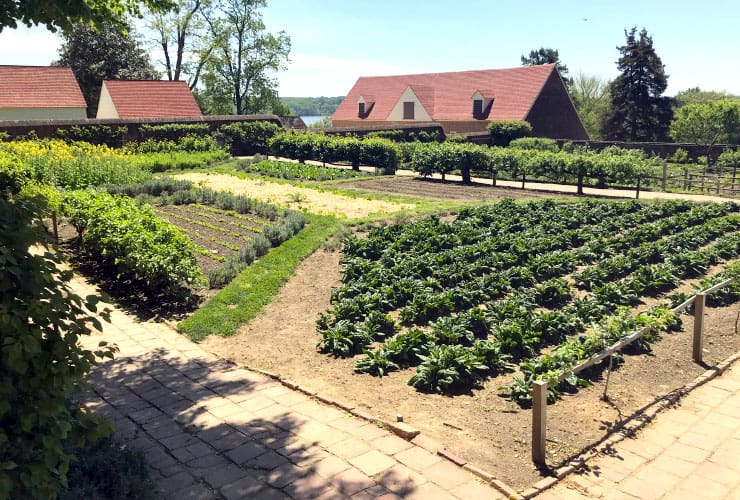
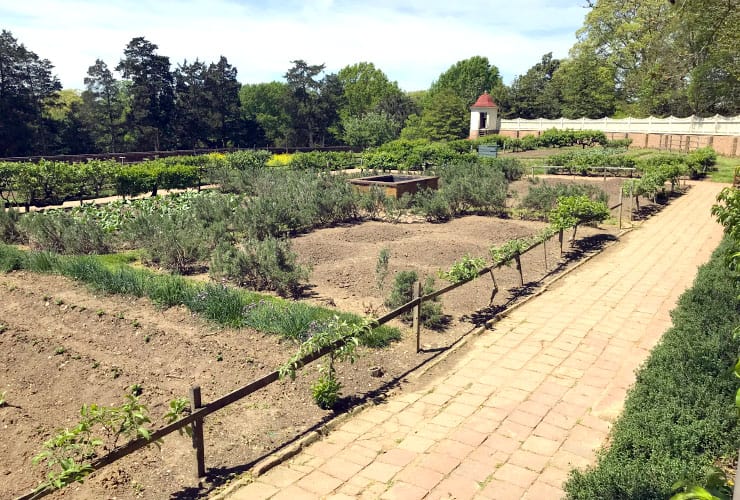
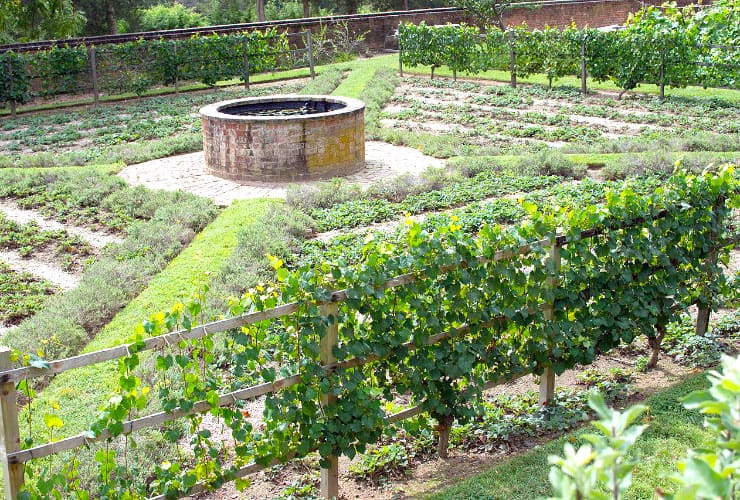
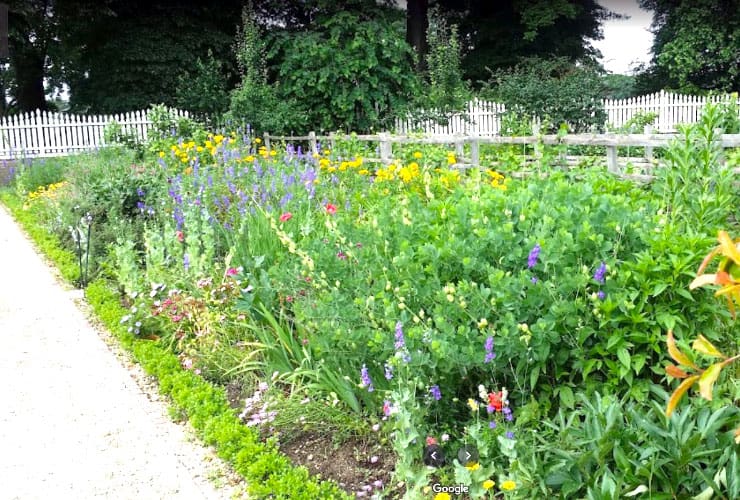
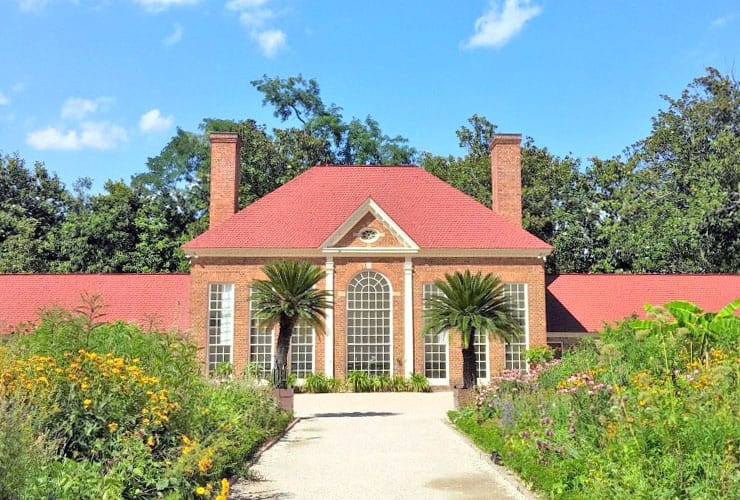
There are gardens along both the south and north walks. To the south are the Lower Gardens or more commonly referred to as the “kitchen garden” as it supplied all of the fruits and vegetables for meals on the estate. Behind the Lower Gardens to the west is the Fruit Garden and Nursery for plants requiring more space to flourish. Originally it was intended to be a vineyard but was converted when the grapes failed. On the north side of Bowling Green are the Botanical Gardens and the Upper Garden with its beautiful greenhouse. Washington was an avid gardener and amateur landscaper. The Upper Gardens, with its abundant variety of plants and ornamental trees similar to the Biltmore Estates, were designed more for the pleasure of the estates visitors.
Working Buildings
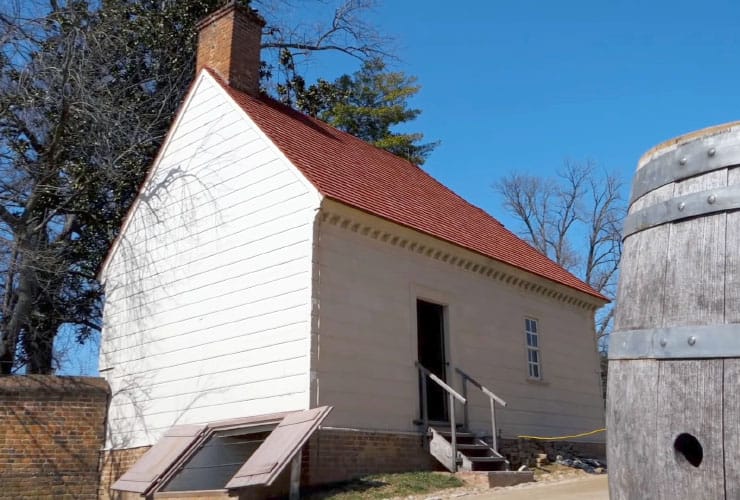
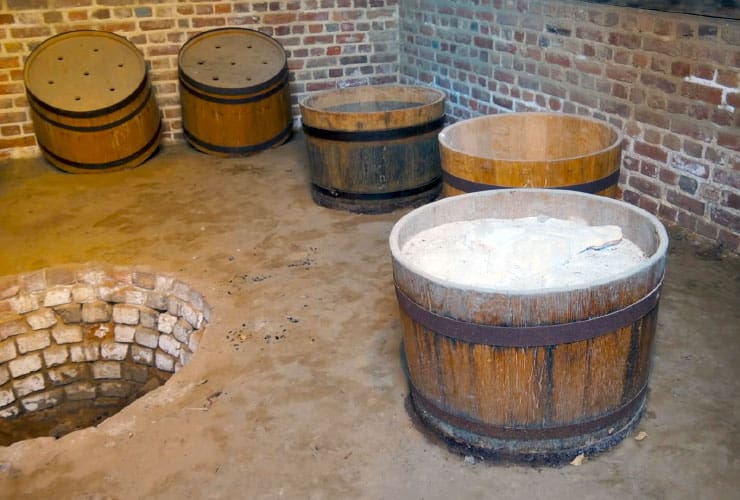
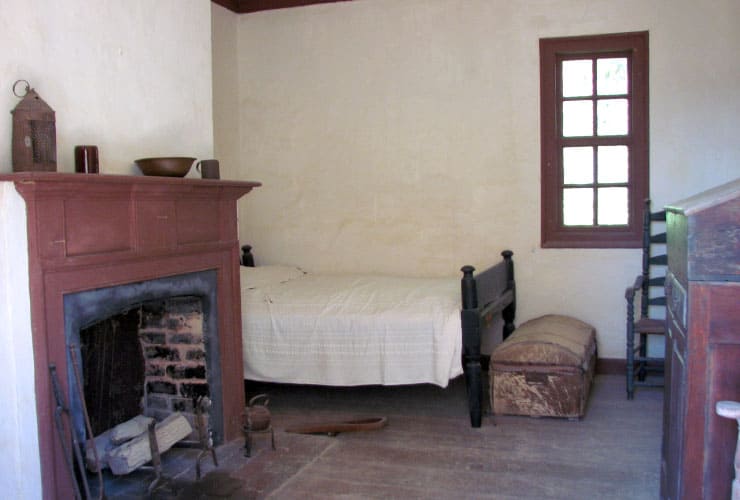
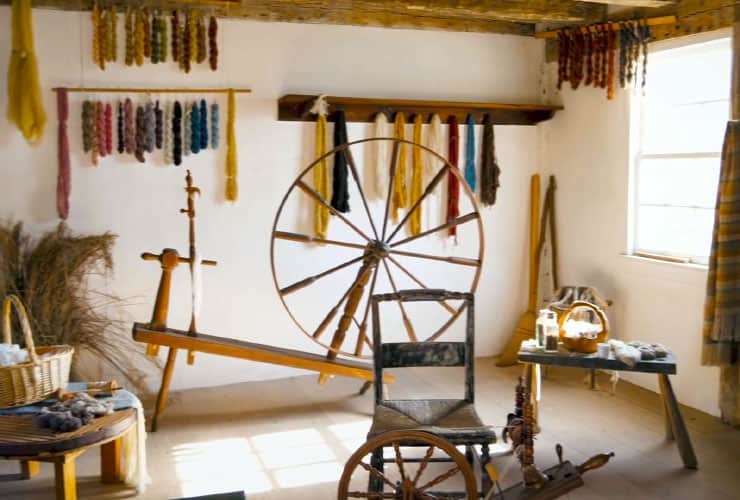
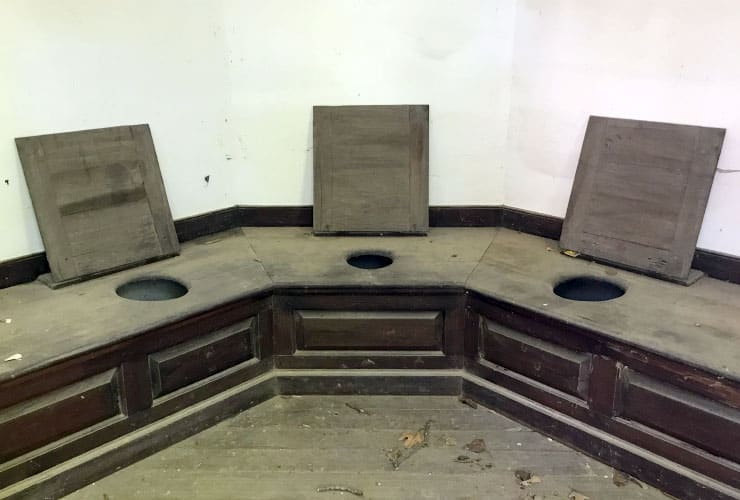
Along the south walk, just before you reach the main house, are the buildings that served daily practical purposes. Among them are the Storehouse for housing supplies such as blankets, clothes, ammunition, etc.; the Clerk’s Quarters; Blacksmith Shop; Smoke House; the Wash House for daily washing and drying for the Washington’s as well as staff and slaves; the Necessary or outdoor privy; Coach House; Ice House; Stable and the Dung Repository for garden and orchard fertilizing.
The Mansion
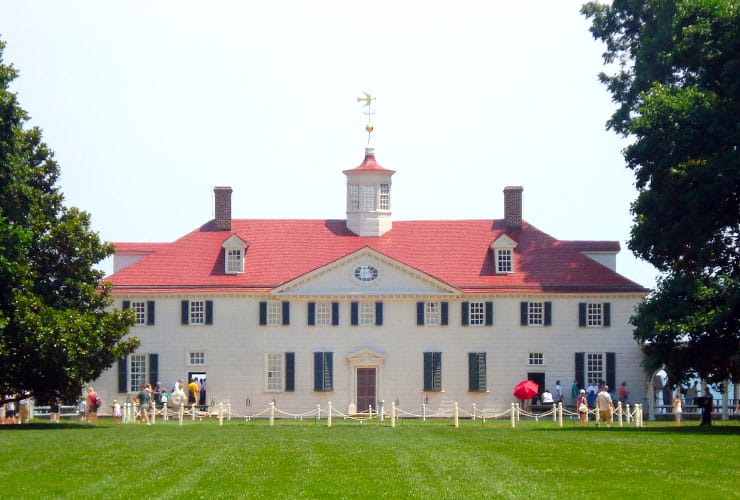
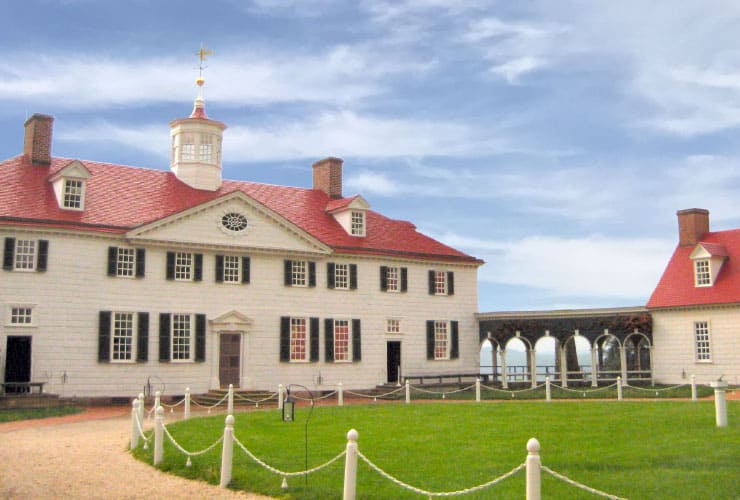
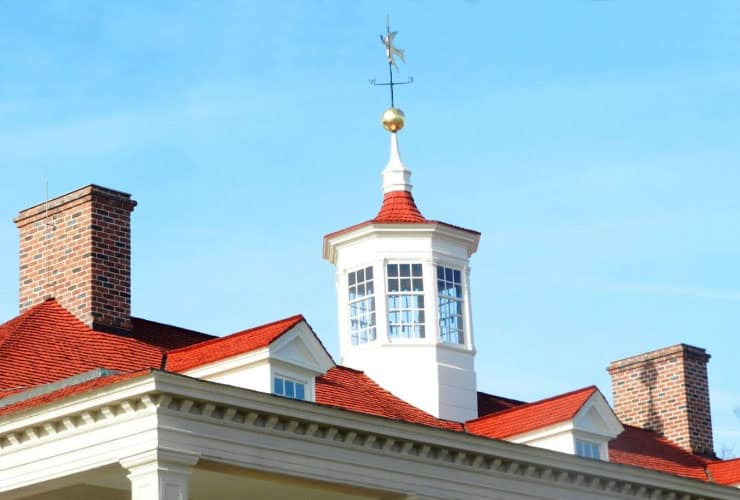
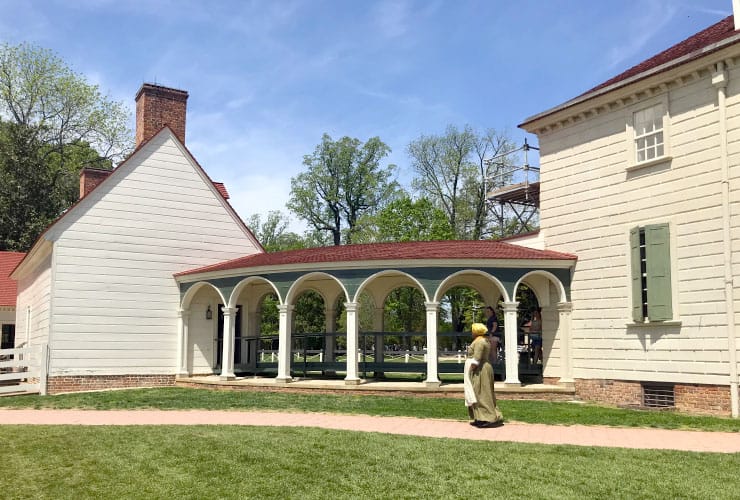
The Main House, or Mansion, is the most familiar visual on the estate. It went through a major refurbish in 2019 but still largely retains its original look at the time of Washington’s death. Among the things that make the main house unique are the home’s siding that appear to be stone but are actually rusticated wood, the iconic 2-story back porch with its Palladian columns facing the Potomac and its memorable dove of peace weathervane. The mansion was 11,000 ft2 (1,022 m2), was 2-stories and had a full cellar making it more than 10 times larger than a typical colonial Virginia home.
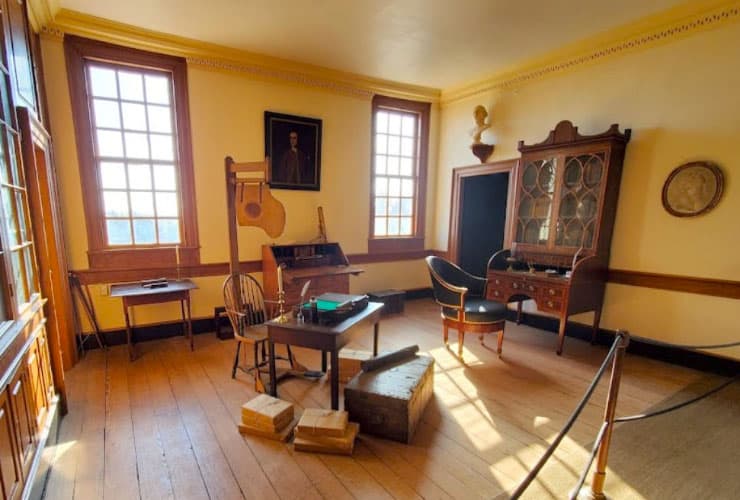
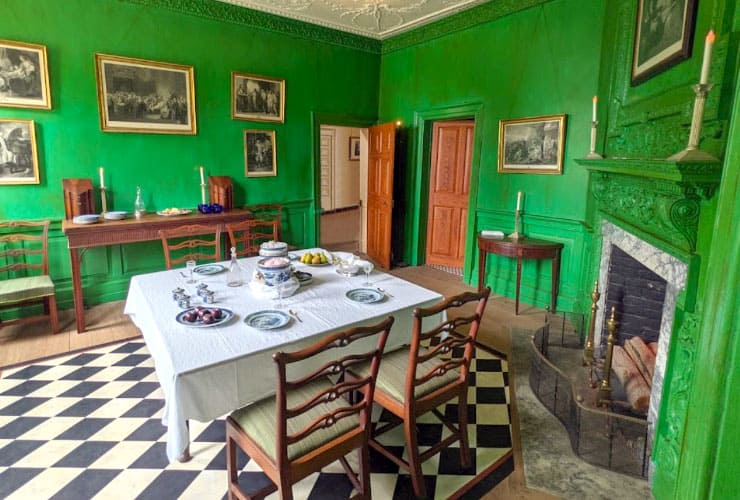
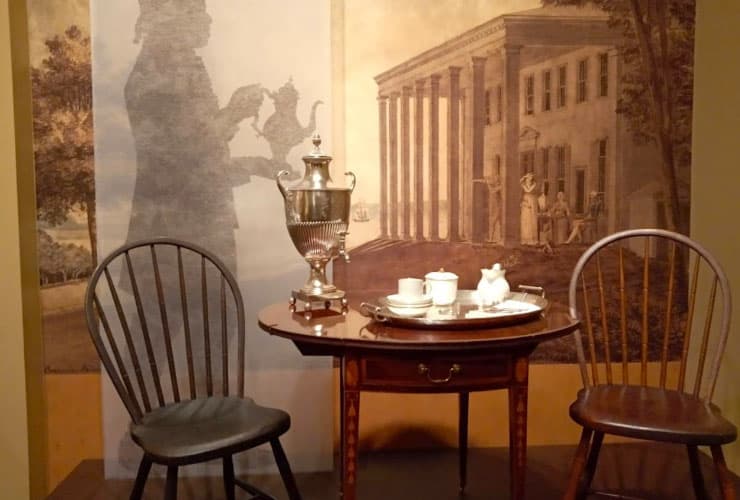
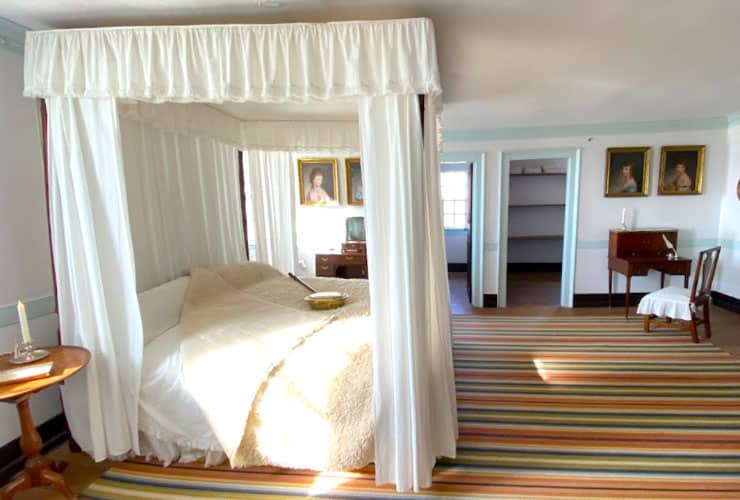
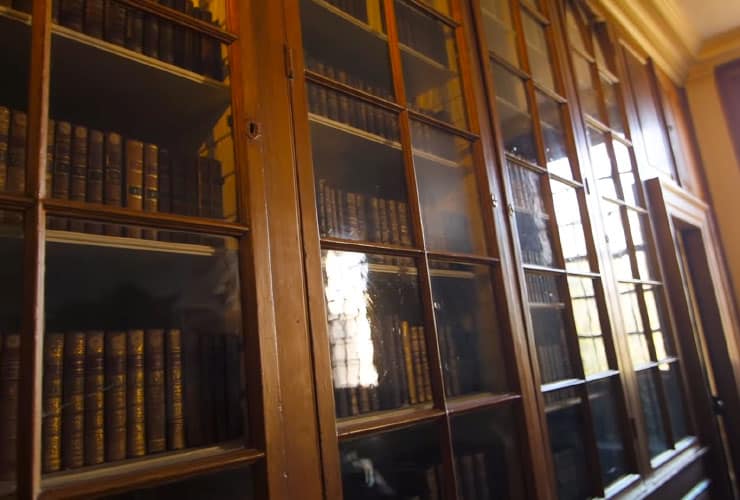
The interior of the mansion cover three floors. The first floor was primarily for large gatherings, private studies and the family dining room. The second floor is comprised entirely of bedrooms including Washington’s Bedchamber with its distinctive multi-colored stripped carpet. The third floor had a few guest chambers but was used mostly for storage and access to the cupula providing a wonderful 360° view of all Mount Vernon and the Potomac River. Obviously, touring the mansion should be near the top of your list of things to see at Mount Vernon.
Potomac River
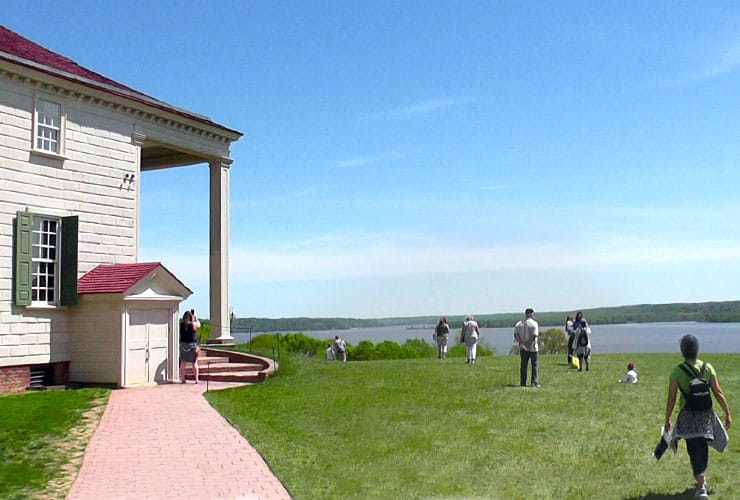
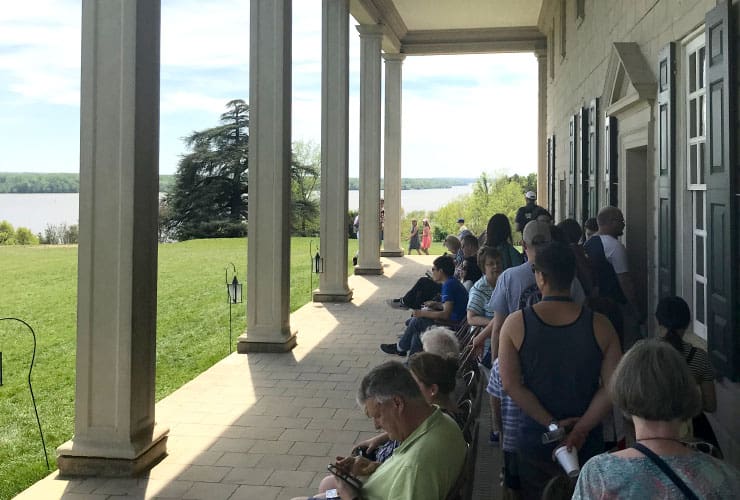
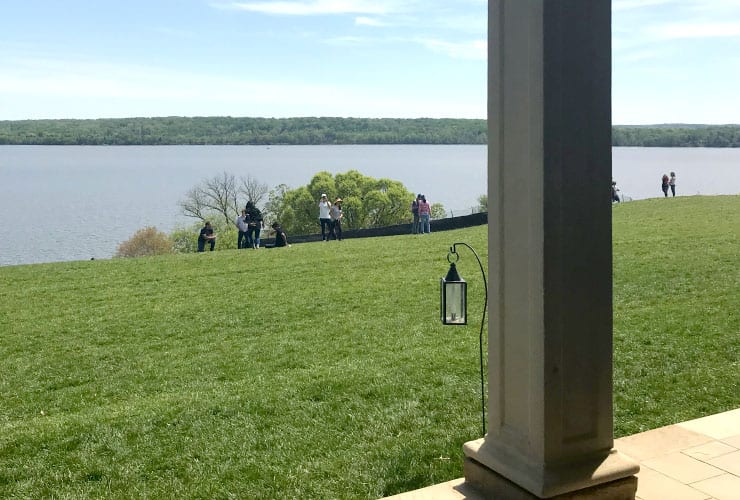
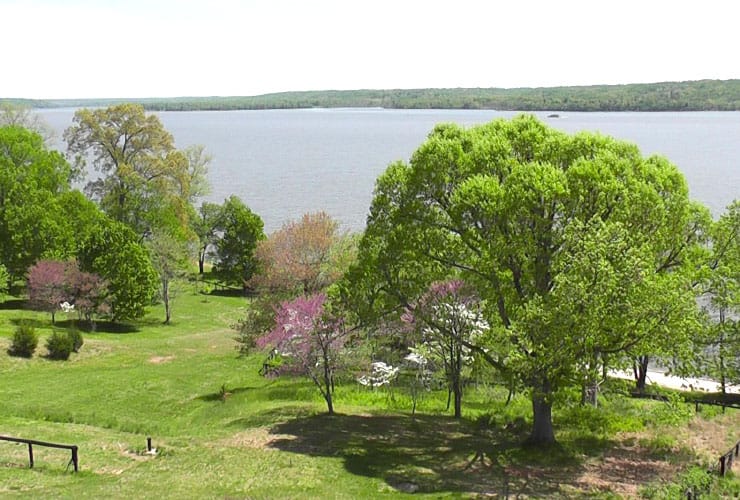
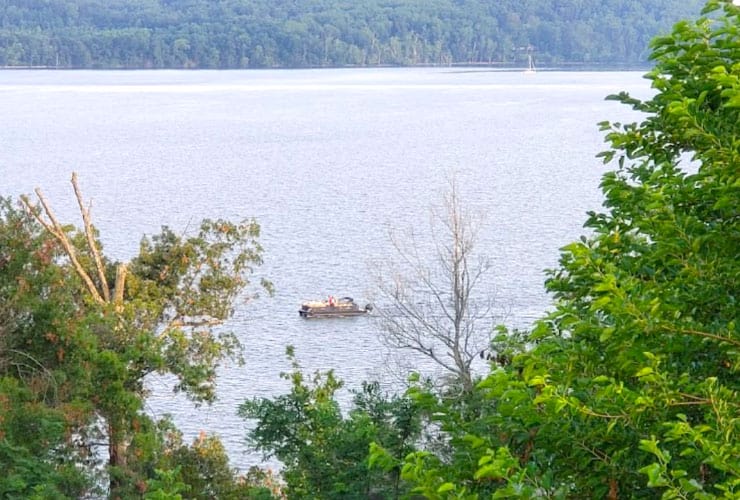
Sitting on one of the many rocking chairs placed along the back porch of the mansion provides an ideal view of the infamous Potomac River. Its name came from a translation of the Algonquian name meaning “river of swans”. Once prolific for its fisheries, the Potomac’s main fishing catch were the herring and shad that would make the water appear silver during early summer spawning season. You can book a cruise along the Potomac, from either Washington D.C. or Alexandria, VA, that passes the Washington Monument and the U.S. Capitol and includes a stop at the Wharf to tour Mount Vernon.
On the Reel
National Treasure 2: Book of Secrets (2007)
Starring Nicolas Cage, Ed Harris, Diane Kruger, Jon Voight. Directed by Jon Turtletaub.
This National Treasure sequel continues the adventures of Benjamin Gates as he looks to clear the good name of his beloved Grandfather. Mount Vernon plays a major part in the story as Gates kidnaps the President (for good reasons of course) in some secret underground tunnels during a huge birthday bash at the mansion. Lots of fun!
Worker’s Quarters
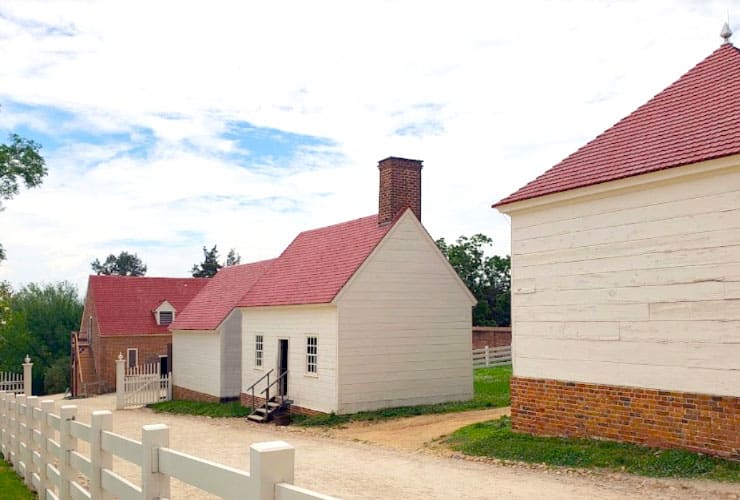
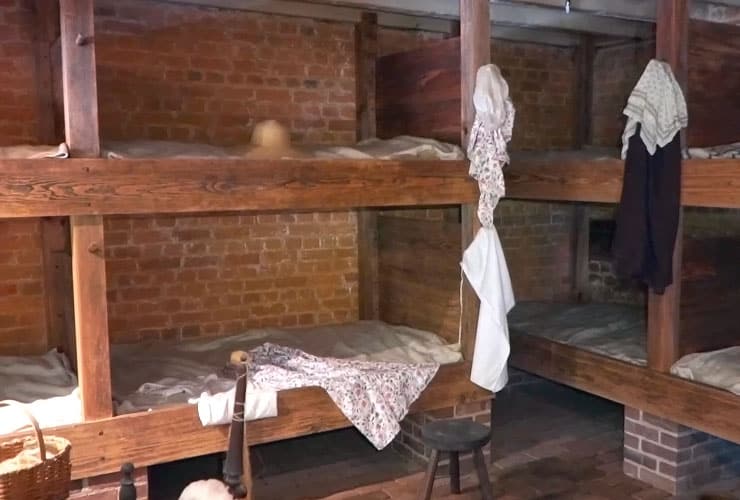
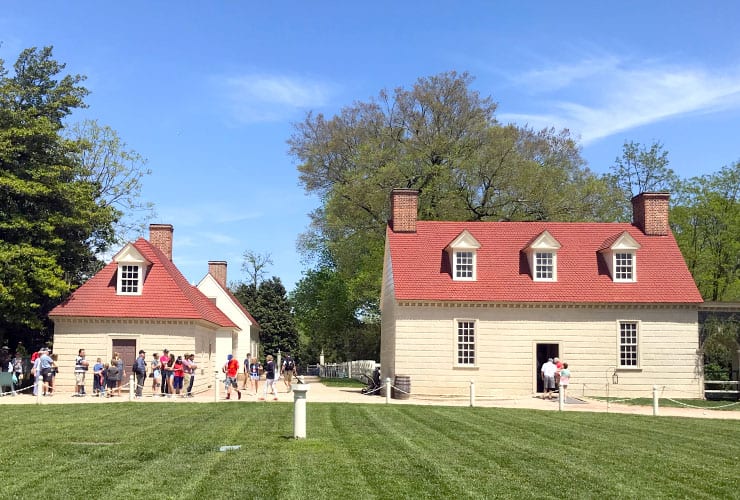
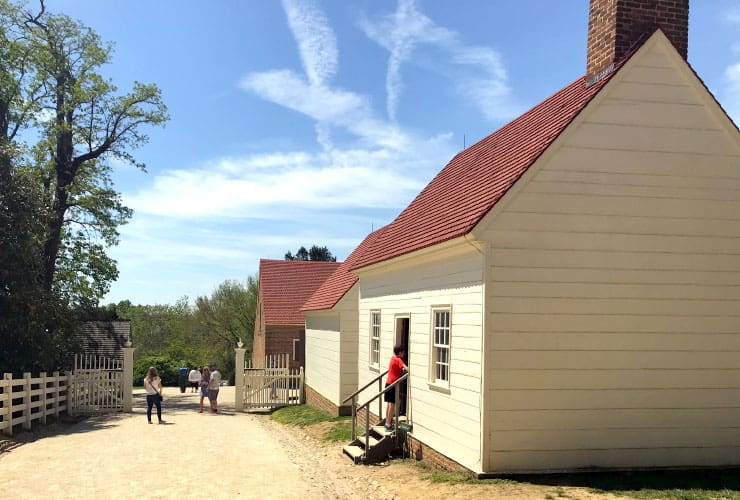
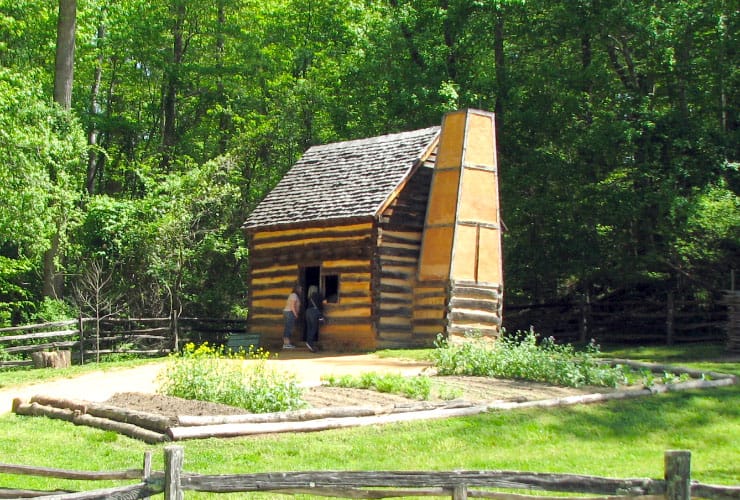
The population of Mount Vernon comprised not only the family but also planters, hired laborers, indentured servants and slaves. There were living quarters on various parts of the estate based on primary job functions. For instance, the slaves that worked in the mansion lived on the Upper Garden next to the greenhouse. Those that worked on the farm would have quarters nearer the fields. Next to the 16-sided barn is a replica slave cabin equipped with a minimum of furniture and eating utensils. Slaves were allowed to grow their own gardens but had little spare time to properly tend and care for the planted beans, carrots, squash, potatoes, etc. If you’re interested in how people lived in the late 18th-century be sure to add this to your list of things to see at Mount Vernon.
Red Devon Cattle
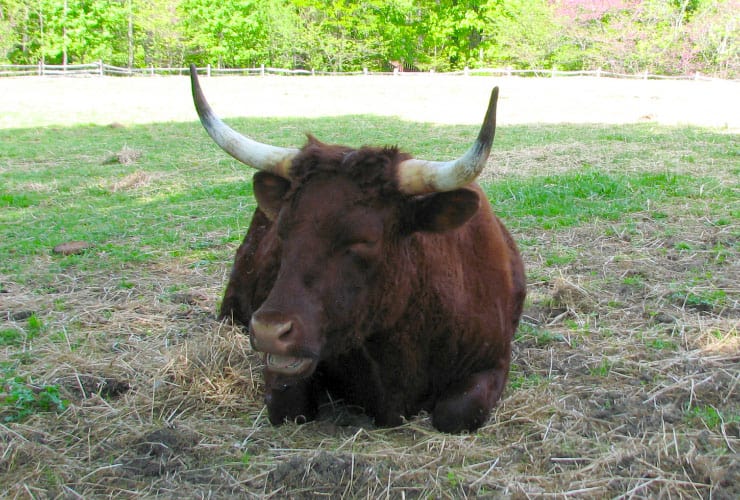
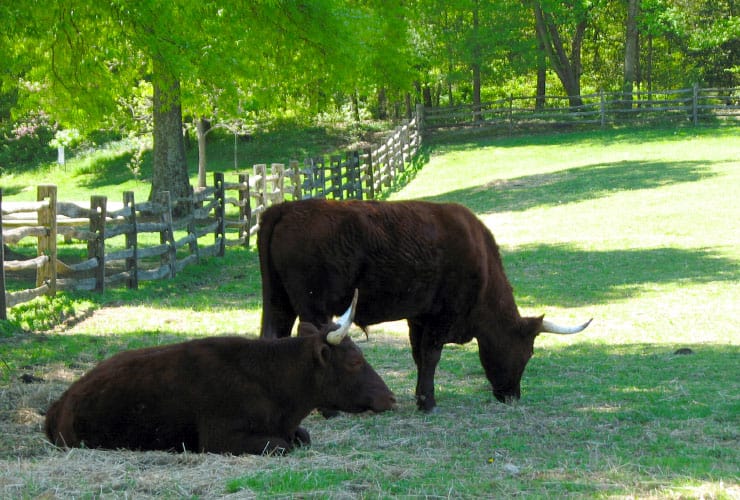
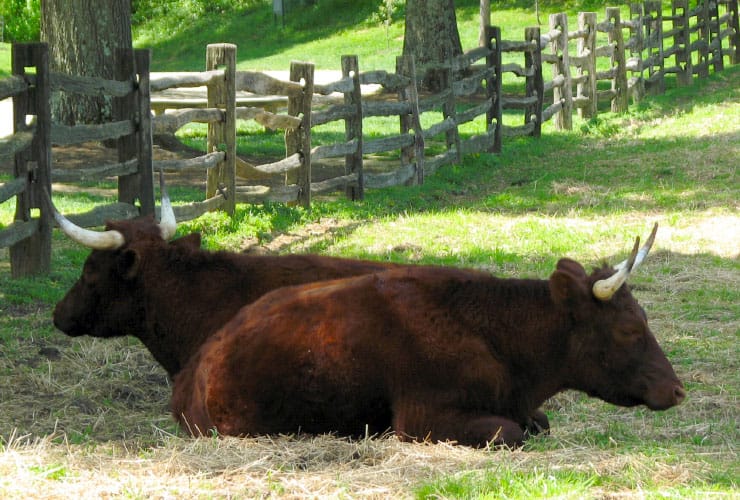
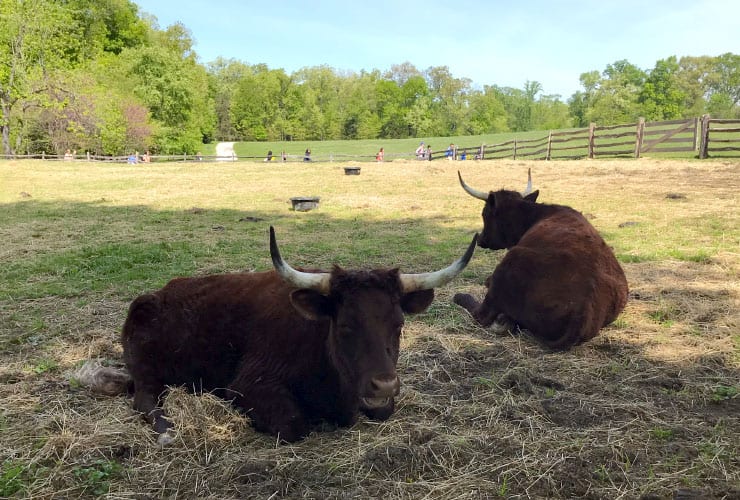
Southwest of the mansion, next to the 12-acre field, is an open paddock containing a number of Red Devon or “Ruby Reds” cattle. These beasts of burden were infamous for their immense strength and pulling power as well as a steady supply of quality beef, milk, butter, cream and cheese. According to records Washington had as many as 166 cattle on Mount Vernon and they were an integral part of the estates daily work. They could pull more weight than an average draft house and were vital to Washington’s goal of developing a working dairy not only for those on the plantation but for residents of Georgetown and Alexandria.
Washington Tomb
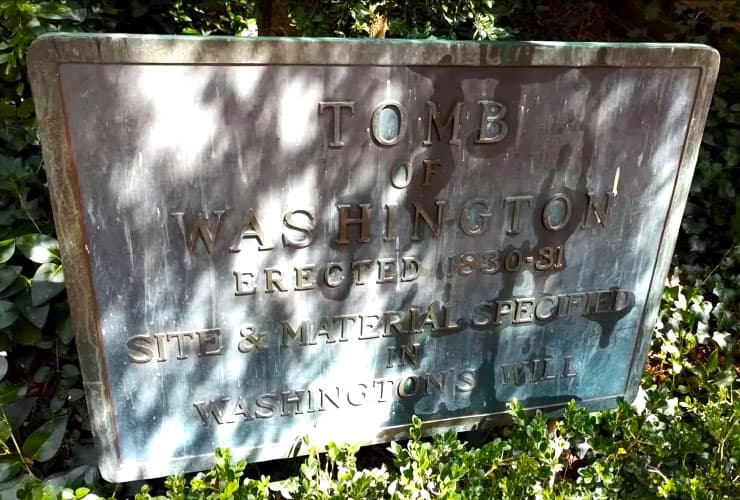
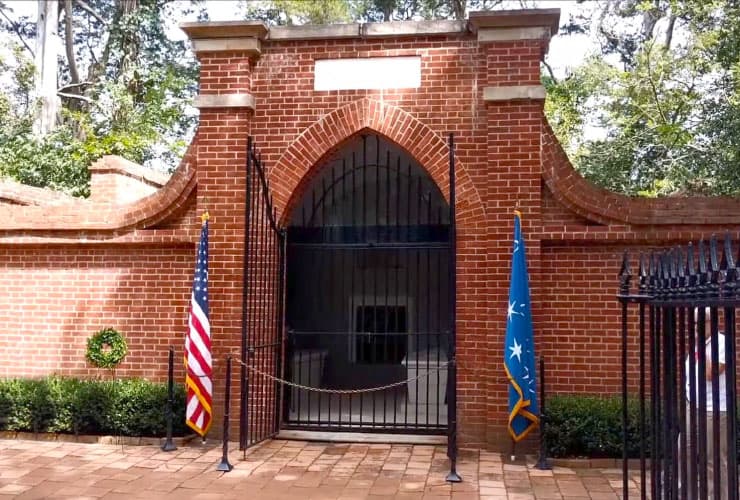
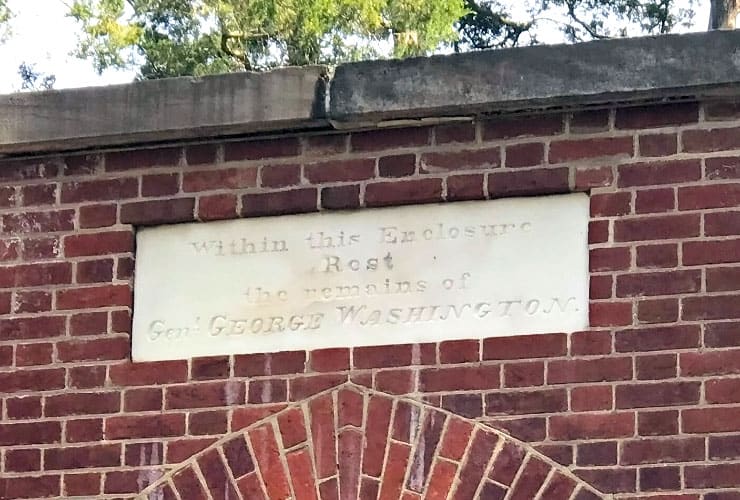
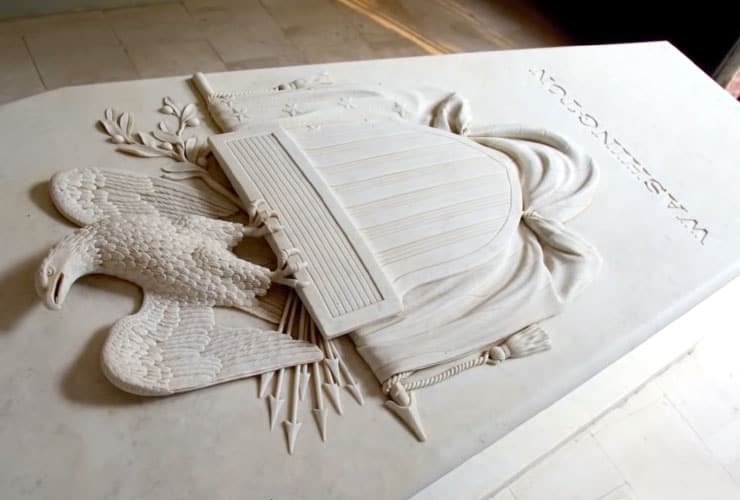
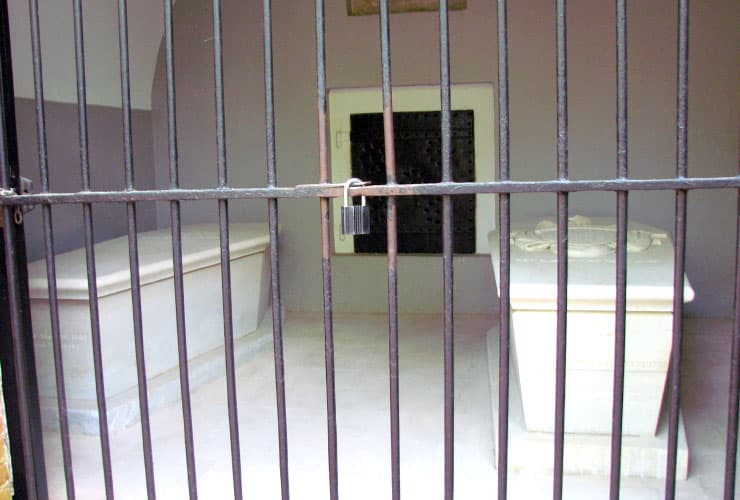
Just to the south of the fruit garden and nursery is the final resting place of George and Martha Washington as well as 23 other members of the family. Washington’s body was originally interned in a crypt below the U.S. Capitol dome but was moved to Mount Vernon in 1831. In addition to the 2 marble sarcophagi just inside the locked gate there are also obelisks in front commemorating descendants of Washington who also served as proprietors of Mount Vernon.
Slave Memorial
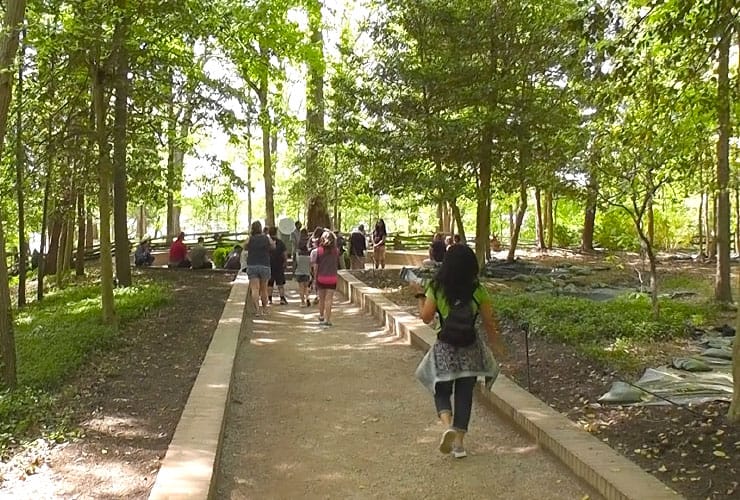
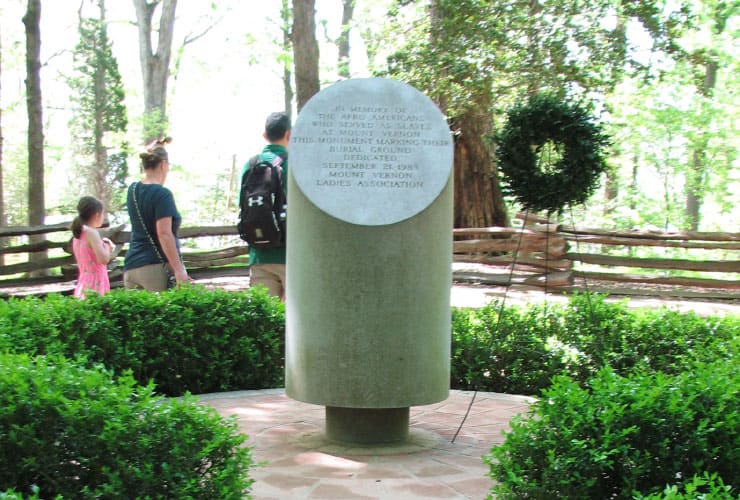
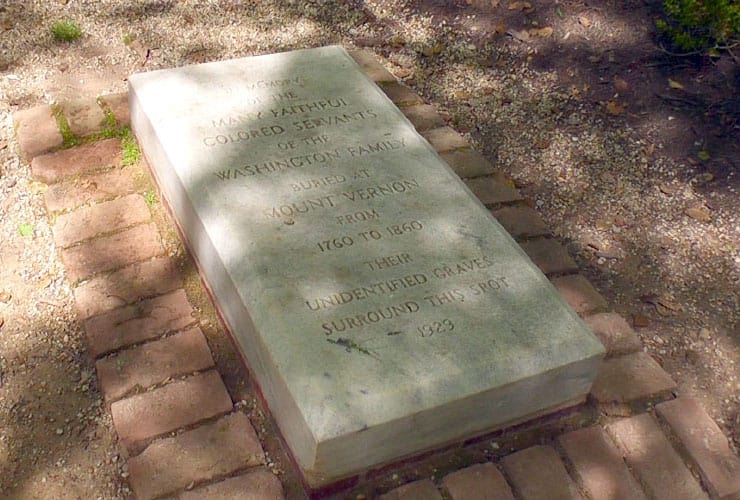
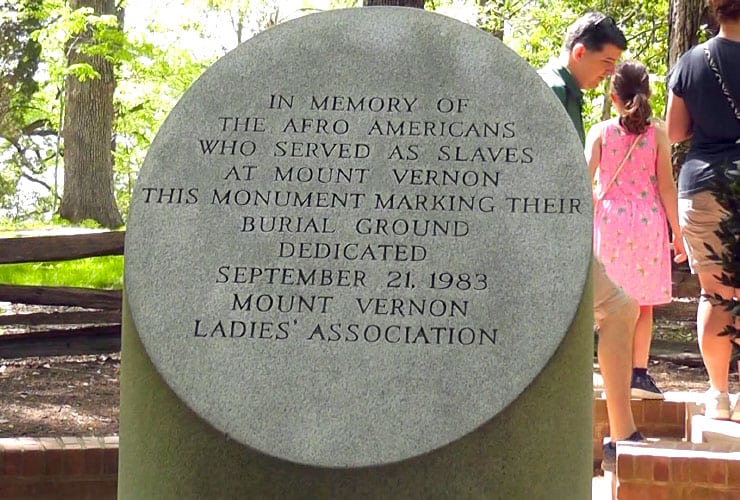
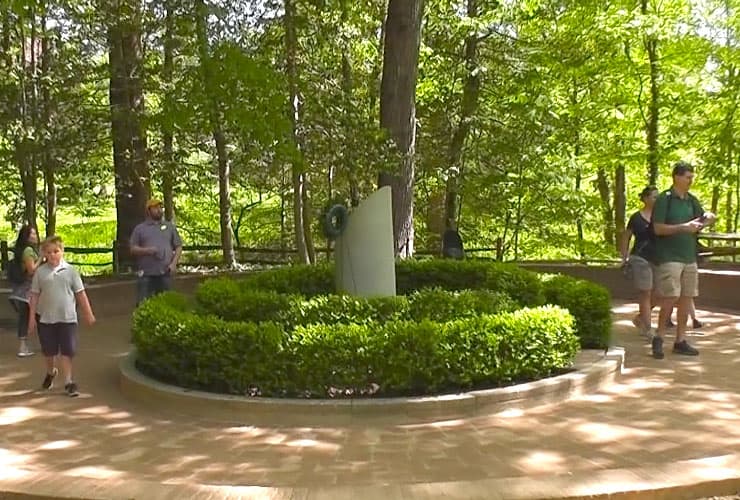
During Washington’s lifetime there were at least 577 enslaved people that worked and lived at Mount Vernon. At 11 years of age Washington inherited 10 slaves when his father passed and the plantation had 317 slaves when he died some 56 years later. In his will Washington freed all of his slaves though many on the plantation were owned by his wife’s family. The memorial was the result of the efforts of Howard University students who designed the memorial that opened to the public in 1983. It rests at the spot where many Mount Vernon slaves were buried over the years.
The Wharf
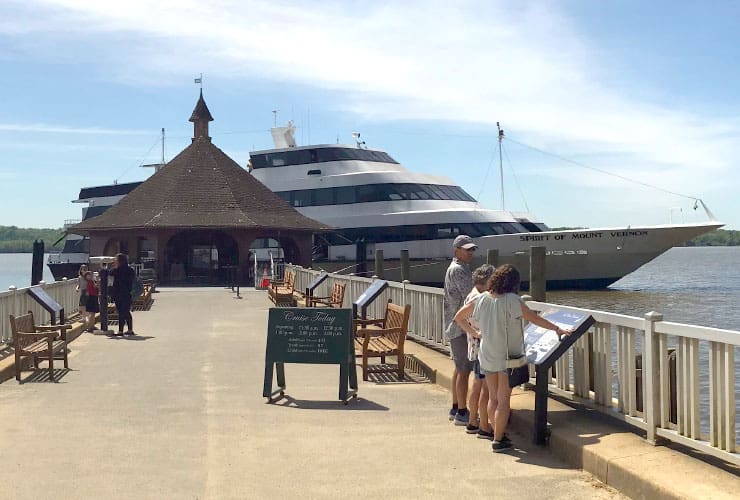
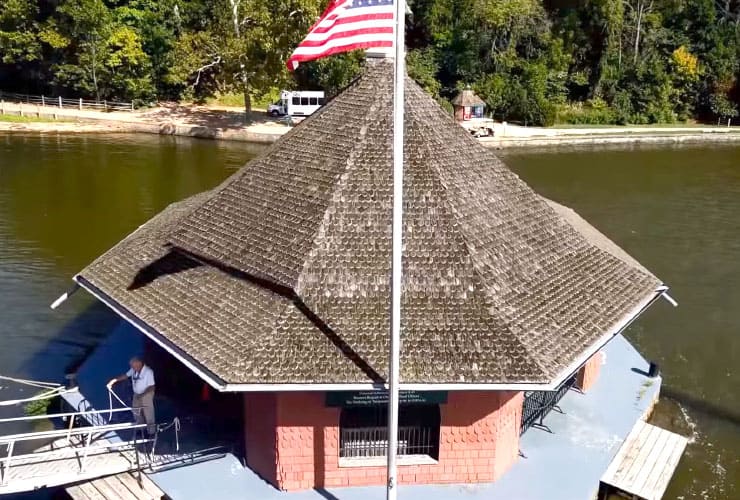
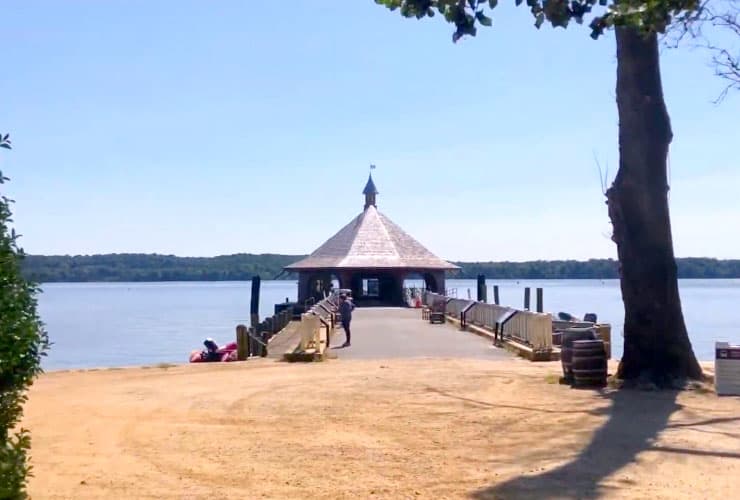
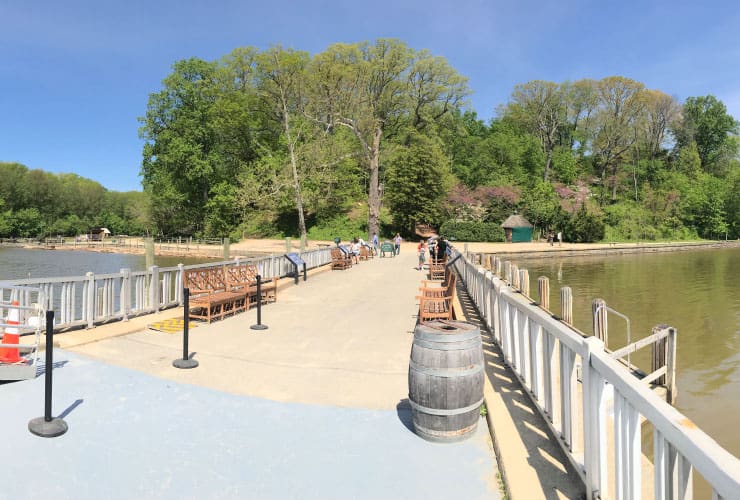
In Washington’s time the most common way to visit Mount Vernon was by way of the Potomac. The Wharf, which lays just to the northeast of the Pioneer Farm, was vital for commerce and as a central port for the delivery of goods throughout the plantation. The original Wharf was rebuilt in 1880 and then restored for a Queen Elizabeth dedication ceremony in 1991. While there are lots of things to see at Mount Vernon the Wharf is a nice place to stop and rest your feet for a few minutes and enjoy the peace and tranquility of the Potomac.
Pioneer Farm
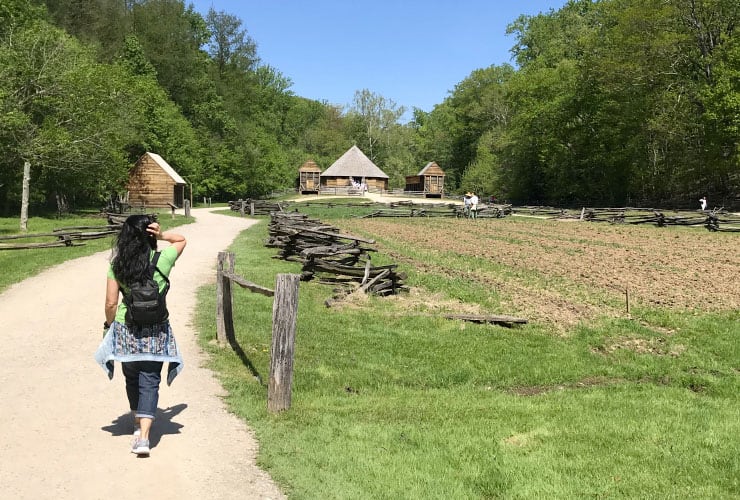
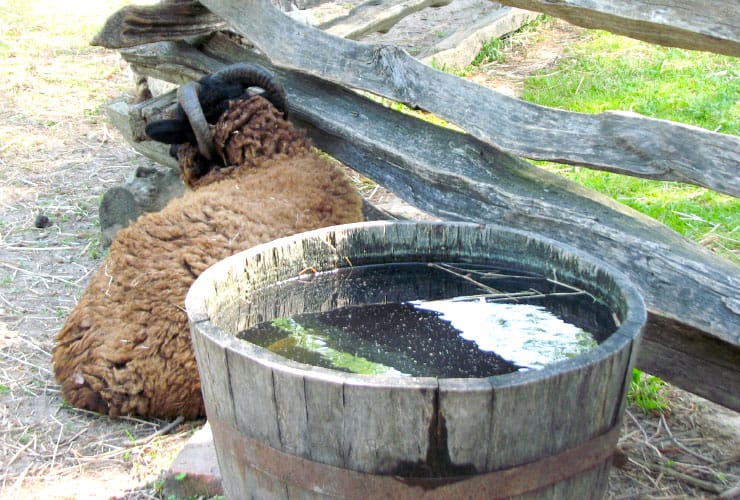
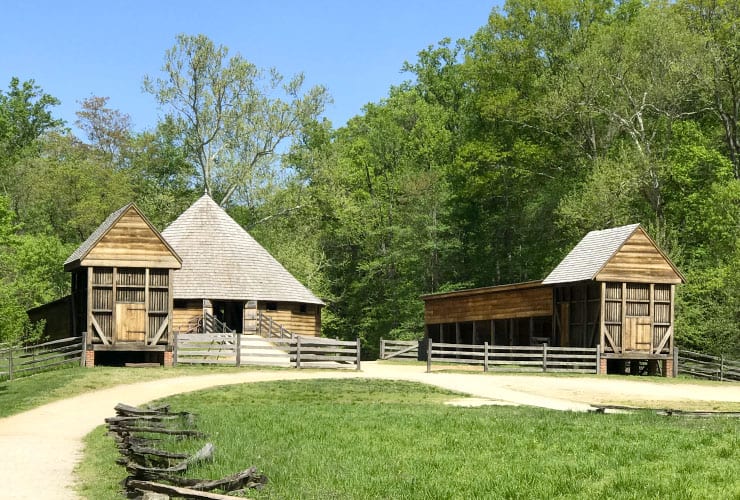
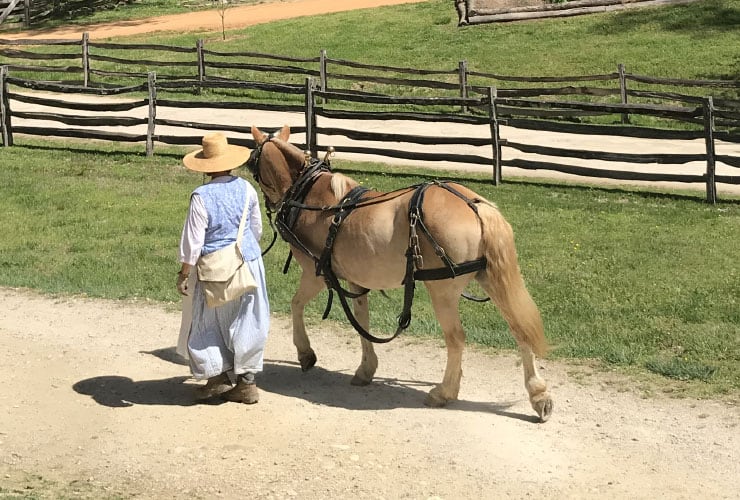
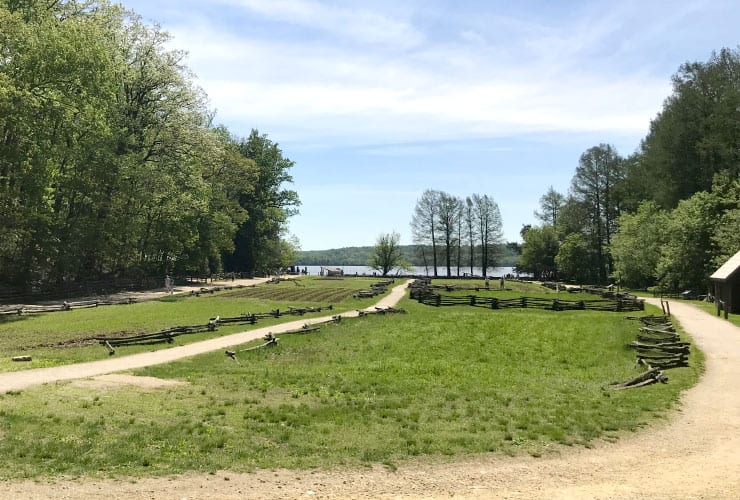
Though one of the nation’s greatest field generals and its first president, George Washington always thought of himself first as a farmer. The Pioneer Farm, located just southwest of the Wharf, is a miniaturized version of the farming portion of Mount Vernon. You can arrange a guided tour or proceed on your own. Either way, from an agrarian perspective, you’ll learn about fisheries, the role of animals, hoe fields, harvesting crops and the burdens expected of the plantation’s enslaved field workers. On a side note, hemp was grown on the farm but was only used (purportedly) to repair fishing nets.
On the Reel
George Washington: The Man Who Wouldn’t Be King (1992)
Narrated by David McCullough. Directed by David Sutherland.
A fascinating American Experience episode that documents Washington’s rise from a young social climber into a great man who understood the temptations, and necessary limitations, of power. Told with incredible visuals through the use of rare paintings, impressionistic photography, prints and etchings all gathered from private collections, museums and libraries throughout the world.
16-Sided Barn
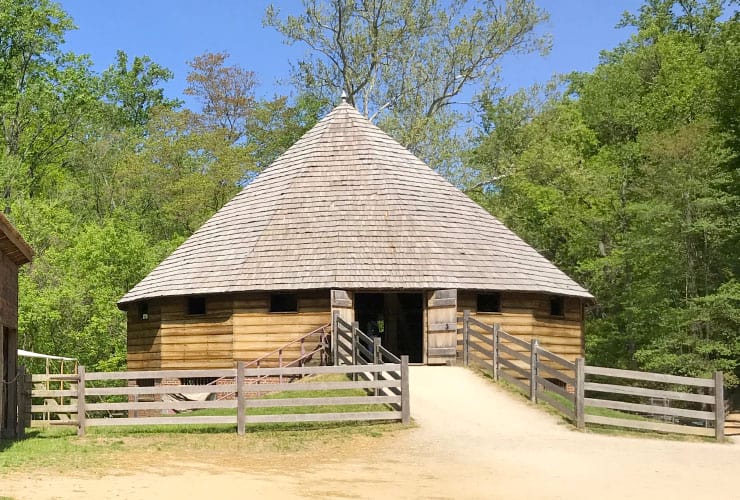
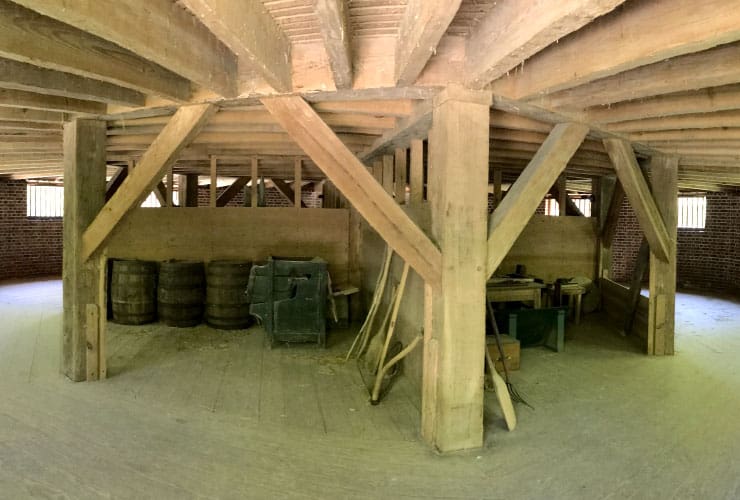
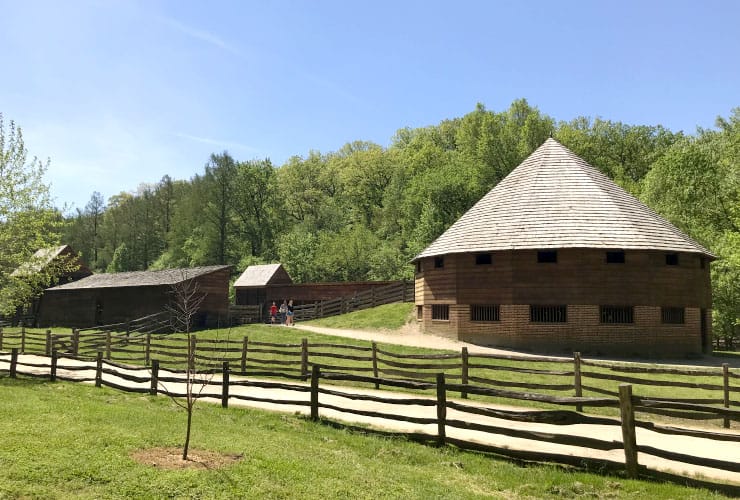
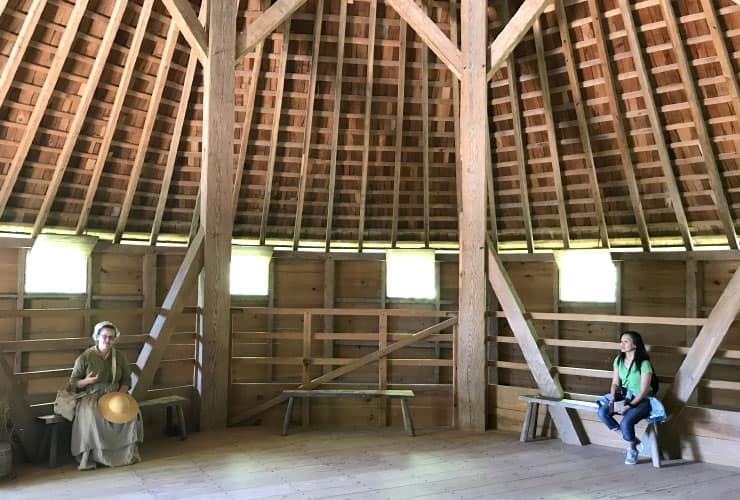
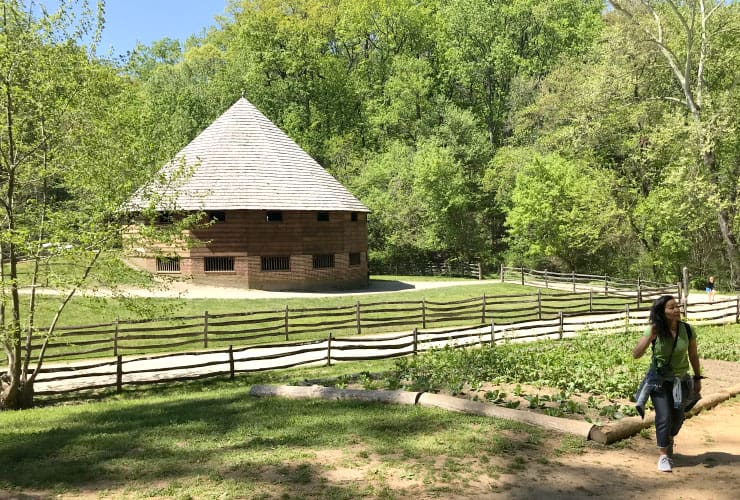
At the far end the Pioneer Farm is one of Washington’s proudest achievements, a 16-sided treading barn. Measuring 52’ (15.8 m) in diameter, the barn was constructed to better protect the wheat from the degradation caused by rain and mud as well as thieves. The lower level foundation was constructed of brick while the upper level was made of white oak, cypress and yellow pine. This precise reconstruction of the original barn, finished in 1996, took 5 years to complete. Ironic in that it took the plantation’s skilled enslaved workers just 2 years to fully construct in the late 18th-century.
Forest Trail
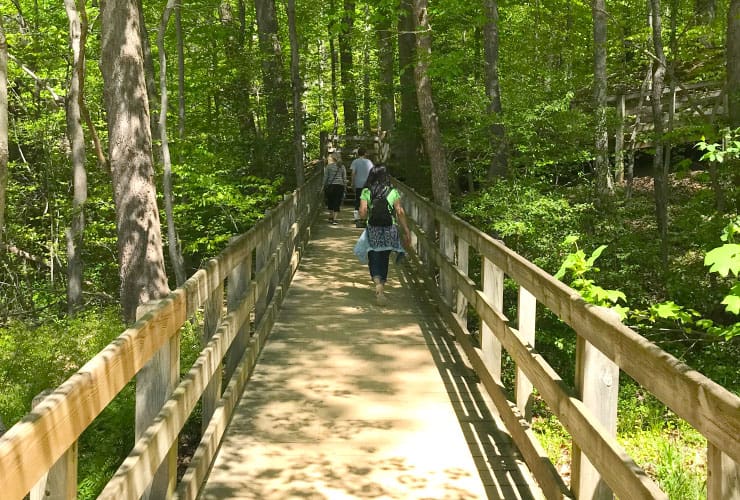
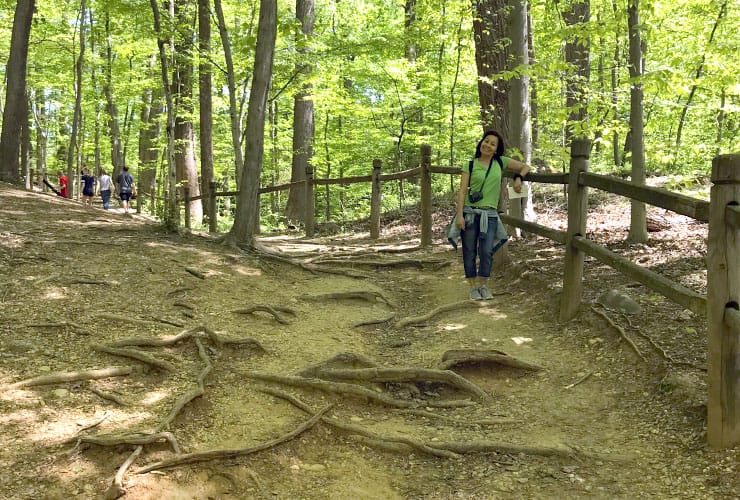
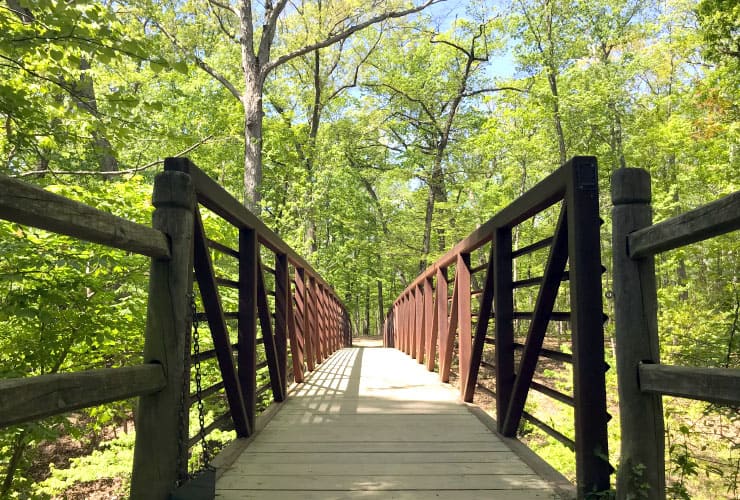
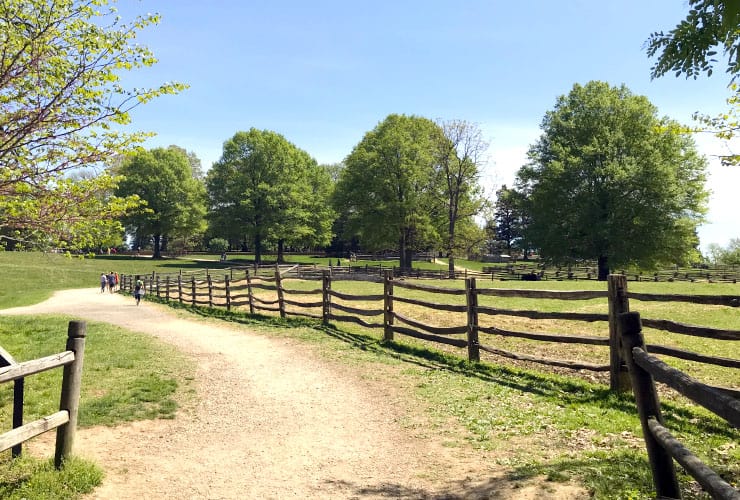
During Washington’s time less than half of the plantation’s 8,000 acres (3,200 ha) were cultivated. The Forest Trail attempts to represent what much of the remaining acreage was like. The forests provided much needed wood for fires, plants for medicine and a home for plentiful wild game. Access to the trail is either behind the 16-sided barn and Slave Cabin or on the western side of the Red Devon paddock. Being hikers, the short Forest Trail was one of our favorite things to see at Mount Vernon.

If you are a history buff, or simply interested in how life was for previous generations, Mount Vernon is a perfect way to spend a day. You can approach by land (there is a large parking area) or by river (docking at the Wharf) and experience a slice of late 18th-century life. There are even more things to see at Mount Vernon than are covered in this abbreviated article so be sure to take your time and take it all in. If you enjoy Mount Vernon be sure to visit Colonial Williamsburg, VA to learn more about 18th-century life.
What is your favorite American home to visit? We’d love to hear about your experience!



